How to Take Better City Pictures: 6 Tips
Urban photography is a great way of capturing the essence of a trip you took or simply of a city you love. The single most important thing when it comes to portraying a city is finding elements that are unique to it. These can be geography or architecture, and even people when captured in a candid image.
Using Madrid as an example, 5-Minute Crafts compiled some tips to up your game and truly capture the essence of a particular place that’s dear to you so that you can share it with everyone.
1. Capture buildings with content.
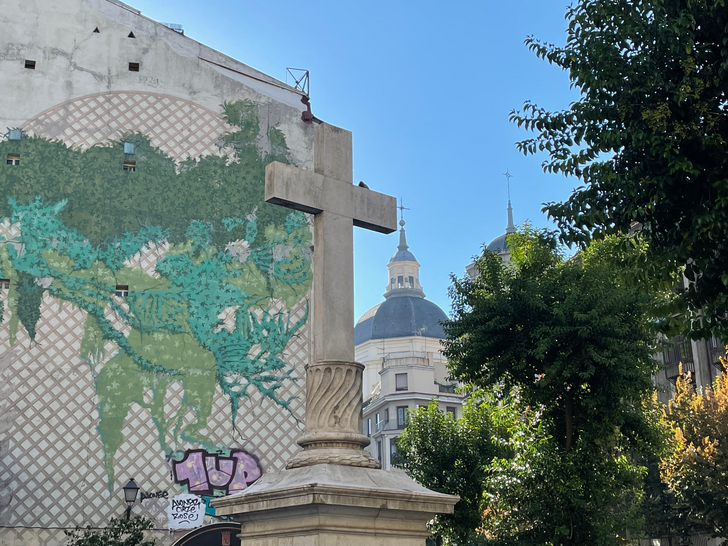
While it’s true that compositions should be strong and uncluttered, it’s also important to have a depth of content in a single image. Focusing on the typical architectural style of the city you’re in can be a great way to tell its story and history.
- Tip: Famous landmarks are not the only kind of interesting architecture you can find. Look around for shops, train stations, modern corporate buildings, and so on.
About the example:
Above, you can find a picture of the Plaza de la Puerta Cerrada that captures the rich history of Madrid. This plaza is one of the last places to hold parts of the ancient Christian Walls as well as the typical ultramontanist crosses that could be found all over Madrid before they were removed back in the eighteenth century. To the right, you see the Collegiate Church of San Isidro and in the back, a trompe-l’œil painted by Spanish contemporary artist Alberto Corazón.
2. Frame your pictures with archways.
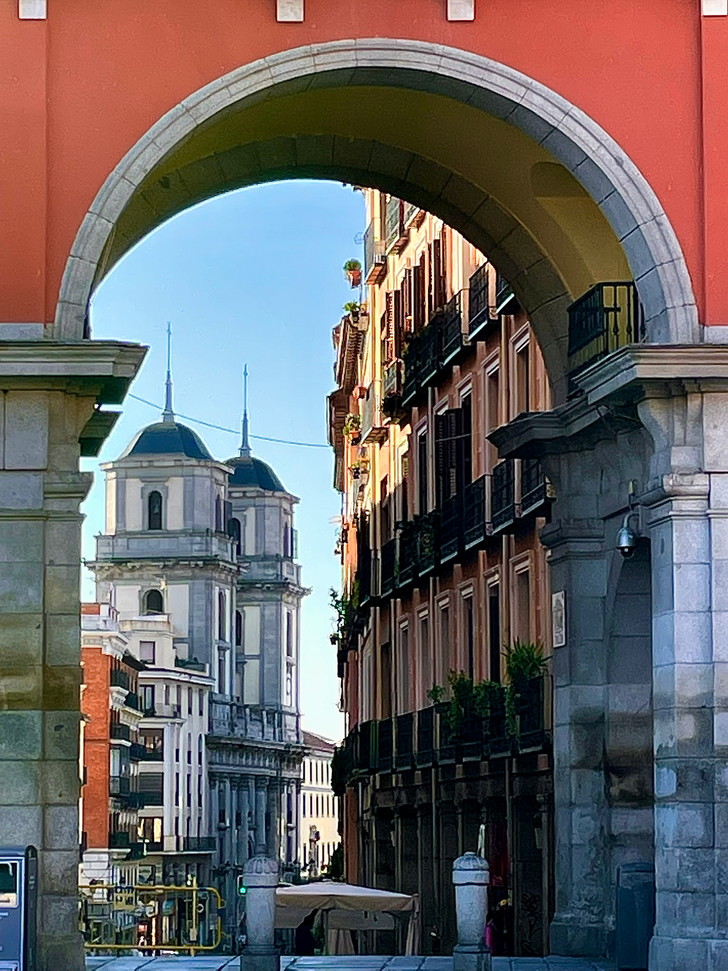
Use the city’s architecture to your advantage by finding arches to frame your pictures. You can also look for interesting shadows that the sunshine generates through the arches.
About the example:
This is another shot of the Collegiate Church of San Isidro as seen from Madrid’s Plaza Mayor. The picture captures an impressive view that’s hiding in plain sight when you walk around the city.
3. Focus on local food.
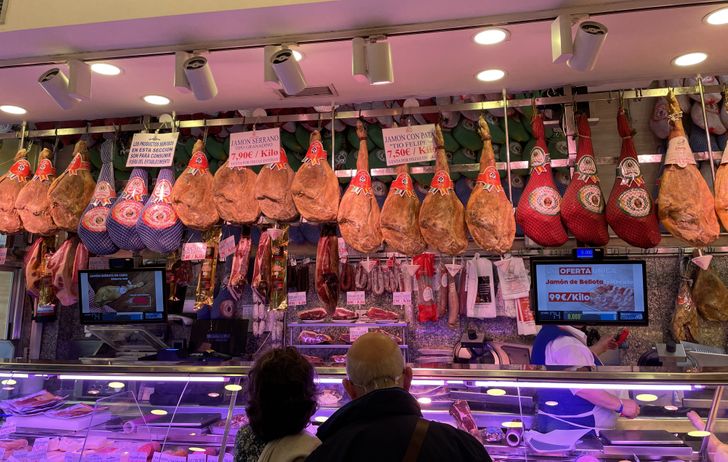
Dining is a big part of experiencing the city you’re visiting or live in. Cuisine and dining traditions are some of the most emblematic ways of understanding the local culture. They’re tangible and make a city distinguishable from another.
About the example:
In the picture above, you can find pork-cured legs, known as jamón ibérico, hanging in a cafeteria. This is a typical sight in Spain when entering a popular cafeteria or restaurant.
4. Shoot night scenes.
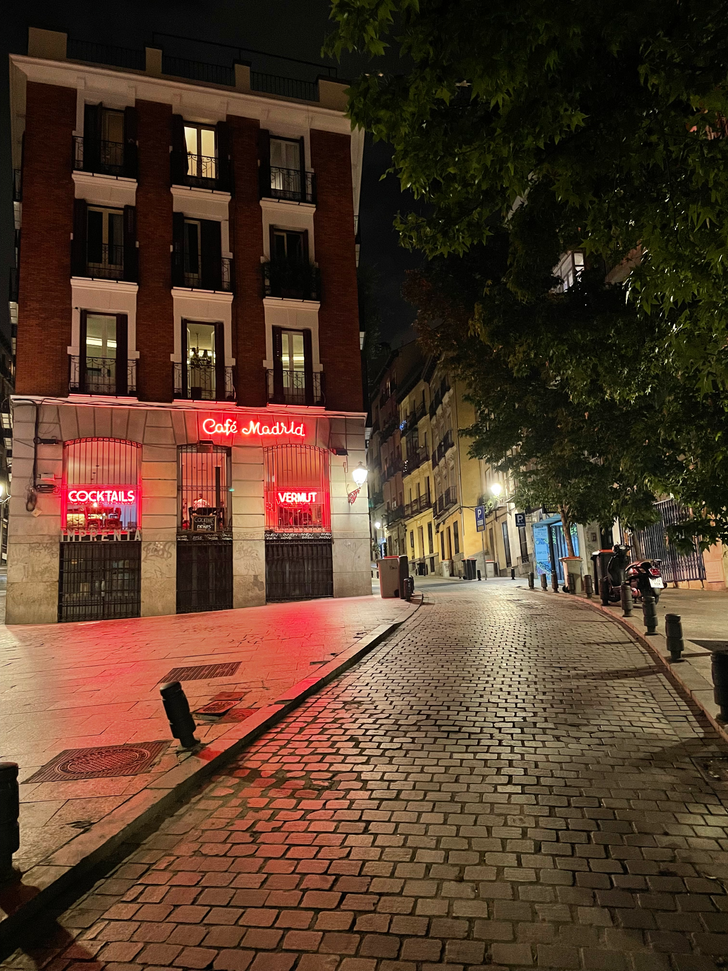
Consider shooting some night photos that show off the lights of the city, especially showcasing buildings that feature unique lighting. Most city centers become great light shows at night. They give an array of colors, from buildings to lights of passing cars. Some cities even look better or simply just different after the sun has set.
About the example:
This typical Madrilenian café is located in a back alley of the city center. The steep inclination of the street gives the already peculiar building a dramatic effect that, when combined with the neon red lights, makes for an almost film noir-like still shot.
5. Focus on details.
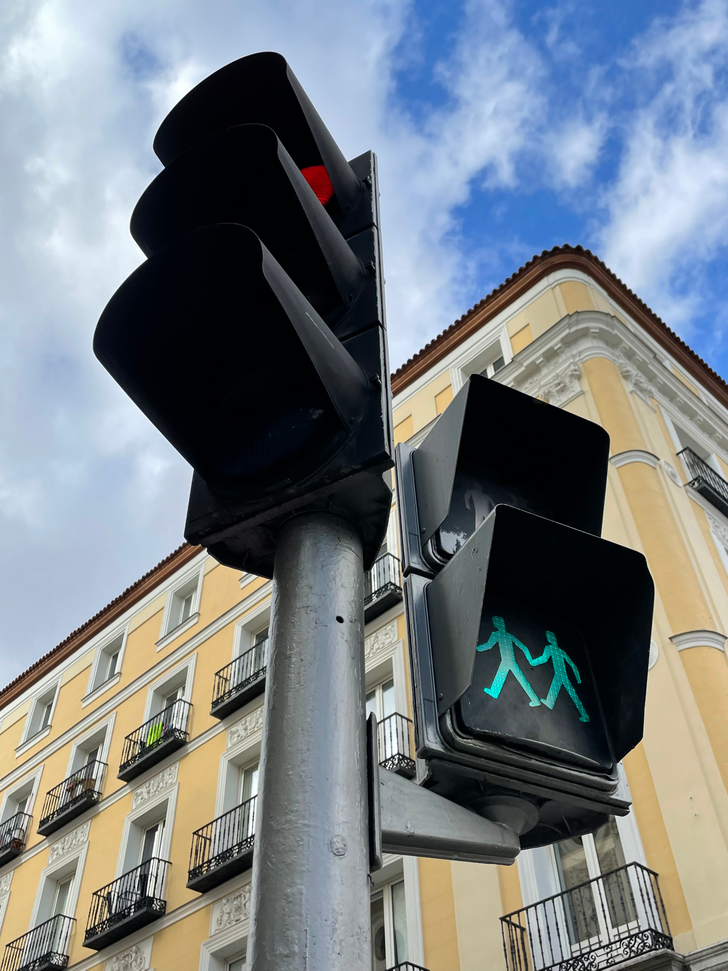
Buildings are nice and easy to spot, but you should also be on the lookout for interesting details that can be found all around the city. Sometimes those can be very revealing of a city’s character. Look into empty courtyards or abandoned streets where you may find a hidden gem.
About the example:
In the picture above, you can see one of the crossing lights installed in Madrid as a celebration of its inclusive and gender-equal character. It features a same-sex couple.
6. Use color to your advantage.
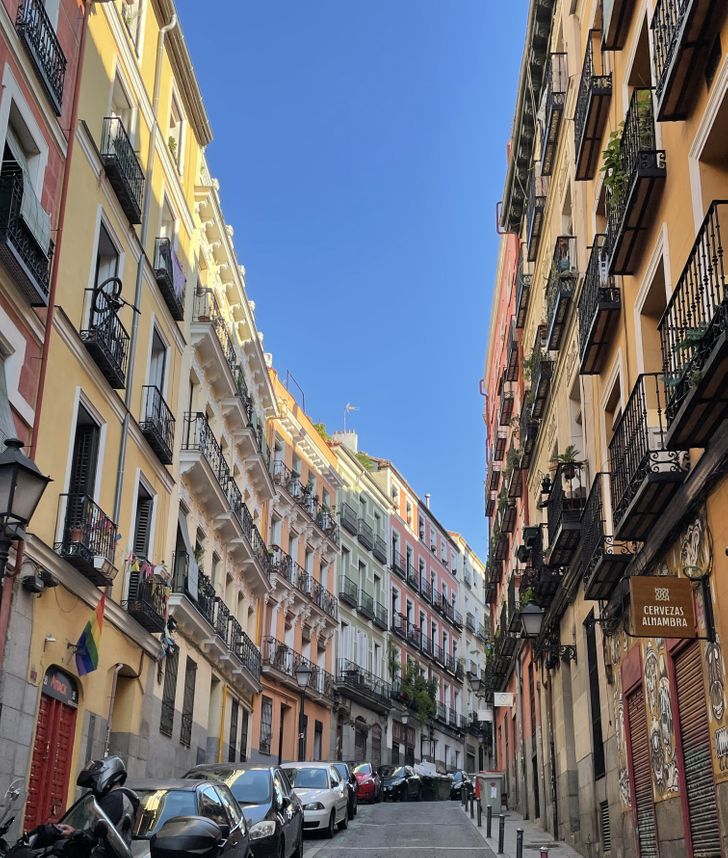
Make the most of vibrant bursts of color throughout your urban environment. Colors are everywhere. Look for matching colors in the city or anything that can reveal the character of the place you’re capturing.
About the example:
This is a shot from Lavapiés, Madrid’s most “typical” neighborhood, while at the same time, still humble and somewhat neglected. It’s known for its large immigrant population that has given it an exotic, cosmopolitan flavor. The colors of the buildings in this picture can be understood as a metaphor for the diversity of the neighborhood.